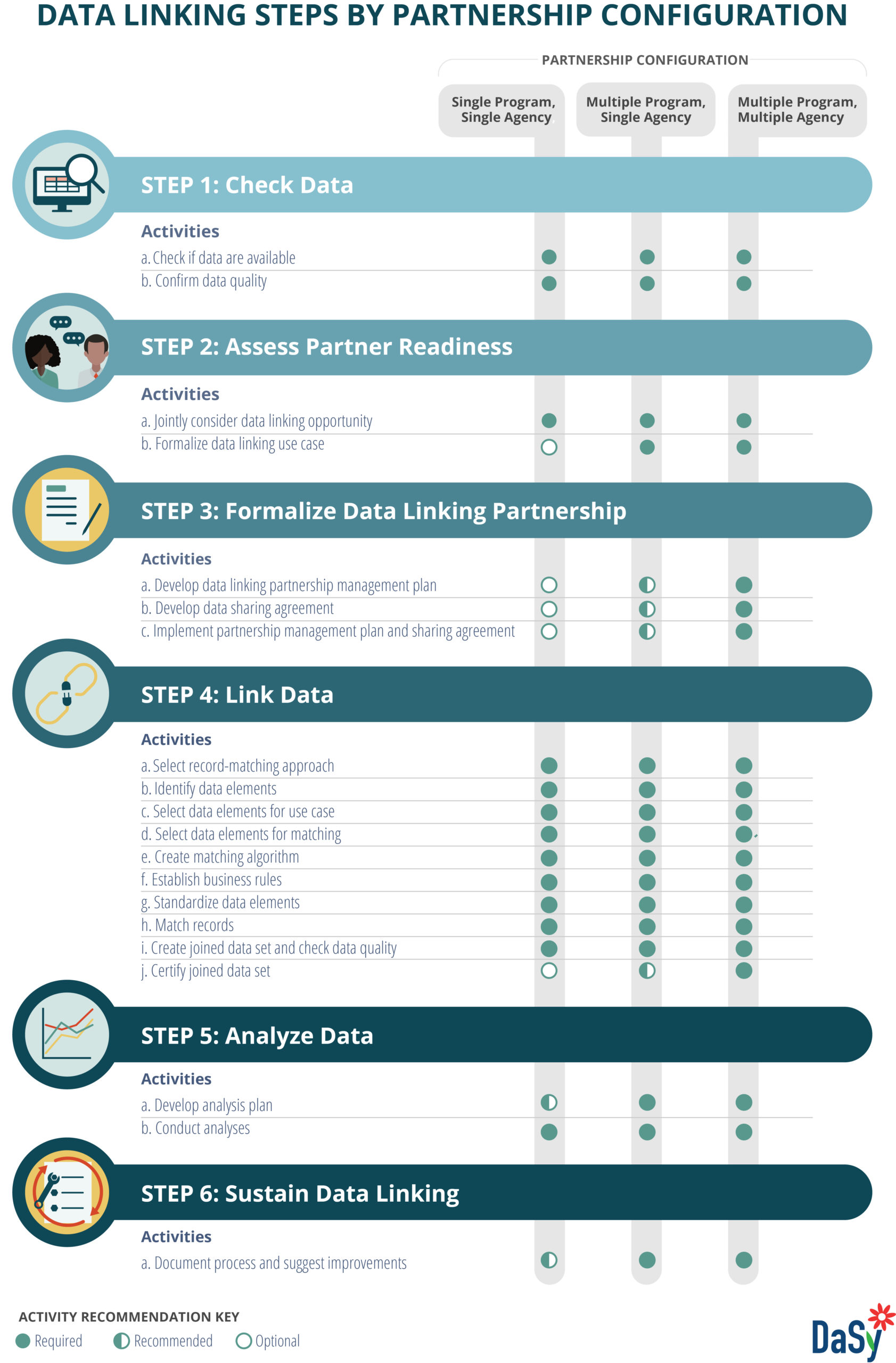- Overview
- Data Linking Introduction
- Data Linking Partnerships
- Part C and Part B 619 Data Linking Partners
- Steps to Data Linking
- Resources
- Citations and Acknowledgments
| Steps to Data Linking | Step 1: Check Data | Step 2: Assess Partner Readiness | Step 3: Formalize Data Linking Partnership | Step 4: Link Data | Step 5: Analyze Data | Step 6: Sustain Data Linking |
|---|
Data Linking Partnership Configurations
Single agency, single program: A program linking two data sets within the same program (e.g., linking Part C child outcome data with Part C child demographic data).
Single agency, multiple programs: Two programs within the same agency linking data sets (e.g., linking Part C demographic data with Early Hearing and Detection Intervention data when both programs reside in a state health department).
Multiple agencies, multiple programs: One program within one agency linking data with data from another program within a different agency (e.g., linking Part B 619 data with data from the Child Abuse Prevention and Treatment Act program).
This Data Linking Toolkit focuses on the steps, activities, and tools to support Part C and Part B 619 program staff in understanding the fundamentals of data linking and creating successful data linking partnerships. The toolkit outlines six high-level, sequential steps to support data linking:
- Check data
- Assess partner readiness
- Formalize data linking partnership
- Link data
- Analyze data
- Sustain data linking
The data linking steps and activities support data linking based on different partnership configurations. (See the partnership configurations box.) The toolkit primarily focuses on data linking between multiple programs, which is the most frequent configuration. However, data linking also occurs within a single program. Single program data linking is simpler for many reasons—primarily because there is a single administration and therefore fewer challenges. Linking data between two programs within the same agency is more complex than linking data within a single program. And linking data between two programs within two separate agencies is the most complex because cross-agency administrative aspects must be addressed.
The infographic below shows the six steps and activities associated by data linking partnership configuration. In the figure, DaSy designates data linking activities as required, recommended, or optional depending on the partnership configuration. In addition, required, recommended, and optional team members are noted for each step.
Published July 2022.


